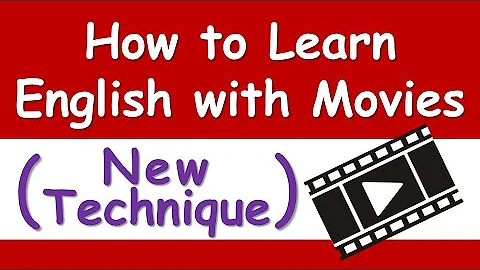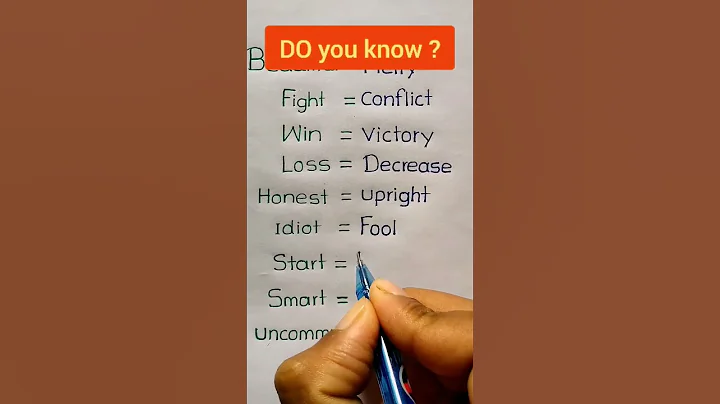Are you: you have read many books but remember nothing; you can't grasp the key points in the book; you have finished reading, but you can't write a word...
" Reading and Writing Consistent: Steps and Skills of Reading and Writing " by Katherine T. McWater has helped about one million people improve their reading and writing skills. It can be said that this book is to move the "Writing Training Camp" into your home and teach you how to read and write step by step.
Reading is input, writing is output. To achieve consistent reading and writing, you need to master the following three points:

1. Active reading, interacting with the author
Reading is not a simple reading through, but a multi-step process, a process of interacting with the author. In the book " Reading and Writing Consistent ", the author McWater divides reading into three steps, namely before reading, during reading, and after reading.
1. Strategy before reading
Before reading, we need to preview the full text first. Take a look at what this book or article says. You can read the title of the book or article, understand the author's situation, read the introduction to the book or the first paragraph of the article, read the title of the catalog or each subsection, read the postscript or the last paragraph of the article. It’s like when we get a book in a library, we will roughly look at what the book is about, who is the author, and then decide whether to borrow it.
After previewing the books and articles, you can make predictions based on your written language experience, background knowledge and familiarity with a certain topic, guess which aspect the article is about and what will be next, and then ask some questions to guide your reading. For example, if the title is to reduce bias, you can ask how to reduce bias? What types of biases are discussed in the article? The title is a deteriorating economic recession, so you can propose what an economic recession is and why it is deteriorating...
2. Strategies in reading
After completing the preparations before reading, you can officially read it. During the reading process, we can use some skills to identify, organize and understand important information.
Use symbols such as horizontal lines or numbers to mark important parts of the topic sentences and key supporting details, and the marking strives to be accurate and appropriate; use the method of drawing opinions to display the connection between the views in a paragraph or article; use the method of column outline to list the main and secondary views to show how they are connected; you can also view and explain the chart.
3. Strategy after reading
Repeated reading is not an effective reading strategy, remembering and writing are. We can deepen our understanding and memory by rewriting and writing summary.
Rewriting is to reinterpret a paragraph, an article or a part of a book in your own words. When rewriting, we can replace it with synonyms, rephrase the sentence components, splitting complex long sentences into two or more short sentences, but make sure that the author's main point of view and its related point of view are understood and that both aspects are included in the rewriting.
Summary is to write down the main points in the article, it is an effective way to refine the points. To write a summary effectively, you need to follow the following guidelines:
First, complete reading before starting writing.
The second is to review the article.
Third, use the starting sentence to state the author's central thought sentence or main point of view.
Fourth is to explain the author's most important point. Be sure to use your own words to express the author's main point of view, and do not copy phrases or sentences.
5: The summary should include the definitions of key terms, important concepts, procedures and principles in the original text.
6 introduces each viewpoint in the order described in the original text.
7 is to reread the summary to determine that it contains enough information.
8 is to ask yourself the question: For those who have never read this article, can your summary replace the original text well? Does it cover all the author's main points? If not, modify your summary to include more information.
9 is the source of resources for marking the summary.
Reading is the foundation of writing. Only by laying this foundation can you talk about the next writing.
2. 6 steps, write a good article
In the book " Reading and writing consistent ", the author divides writing into 6 steps, namely:
1. Generate opinions
is to find the opinions to be written. You can generate opinions through four techniques: brainstorming , free writing, branching, and asking questions.
Brainstorming does this:
One is to list all the opinions you think of about your topic.
The second is to list phrases and phrases, observation results and ideas.
Third, give yourself a time limit.
Free writing to do this:
One is to keep writing around your topic.
Second, don’t worry about correctness, write whatever you think of.
Third, give yourself a time limit.
radiate branches to do this:
One is to write your topic in the middle of a page of paper and circle it.
The second is to write the relevant opinions you think of around the topic and circle them. Connect each point of view and theme with straight lines. When you think of more points, you exud more branches.
Ask a question and do this: use "who, what, when, where, why, how to ask some questions about the topic. You can also ask other questions casually. After asking the question, if you know the answer, write down the answer.
The above four techniques are used. There are no rules to follow when using them. Which technique is more effective, then choose which one.
2. Organize the opinions
When the opinions are generated, the next one is to organize the opinions. It is to find the relationship between each opinion and use a reasonable logical structure. Put it in paragraphs or articles. You can also use a point of view to illustrate the relationship between each point of view.
3. Consider the purpose of readers and writing
No matter what you are writing, two factors you should consider are the purpose of readers and writing. When writing, ask yourself: Who can read what I write? How should I express my opinions so that readers can understand. That is, what style of writing you use, what words you use, what examples you give, etc. are all related to your readers.
In addition, a good article must also achieve the intended purpose. For example, you need to write an article to tell readers how to lose weight by exercise. Then readers must learn how to lose weight by exercise when reading this article. Then, our expected goal is achieved.
4. After writing the first draft
, we can start writing the first draft. When writing the first draft, you should express your point of view in the form of sentences and paragraphs. You must focus on the point of view, rather than grammar, words and punctuation.
5. Modifying the
0 is your opportunity to make significant improvements to the first draft. Including: rethink your point of view; evaluate your expression effect; through Add, delete, change and reorganize your views to modify the first draft. After all these are modified, we will modify the punctuation marks, words, and grammar.
6. Proofreading
Proofreading is to check the errors in your article in sentence structure, grammar, words, punctuation marks, etc.
Through the above 6 steps, a good article that is popular among readers will be born.
3. Think, read and write critically
Using critical thinking is essentially effective in reading and writing.Critical thinking means evaluating and responding to what you have read and what you have written, rather than accepting everything as "facts".
1. Think critically and infer
Inference is an evidence-based guess or prediction of unknown things based on existing facts and information. To make inferences, you must first understand the literal meaning; pay attention to details; combine facts; pay attention to the author's wording; understand the author's purpose; and ensure that the inference is supported by the content of the article.
2. Assessing the source of data and the qualifications of authors
To evaluate the source of data, you must consider the reputation of these sources, the target readers, and whether literature records or references are provided. For non-fiction books and regular paperbacks, take a look at the author’s qualifications and experiences that come with the cover and back cover.
3. Distinguish between facts and opinions
Facts are verifiable statements, that is, facts can be proven to be true. An opinion is a statement expressing feelings, attitudes or beliefs, and it has nothing to do with truth or falsehood. For example, it is true that Martin Luther King was assassinated in 1968. Americans should give up their private cars and take public transportation instead, that's the point.
4. Evaluation of evidence and omitted content
Many authors provide evidence to support their views when expressing opinions, stating opinions or making generalizations. As a critical reader, the task is to examine the type of evidence presented by the author and the relevance of evidence. In addition to evaluating the evidence provided by the author, it is necessary to consider what the author chooses to omit, which may mislead the reader by omitting important information.
5. Analytical tone
Tone refers to the author's attitude or feeling towards his topic and reveals the author's intention. To critically analyze whether the author's tone is beneficial, sympathetic, persuasive, funny, nostalgic, angry tone. Every tone will be related to the reader's feelings.
Using critical thinking in the process of reading and writing allows us to distinguish high-quality information from inaccurate or incomplete information, and allows us to have a good understanding of what we read when completing writing tasks.
The ancients said: "Reading thousands of books will make you write like a god." Indeed, as long as you master the methods and techniques of reading and writing in the book " Reading and Writing Consistent ", you can achieve twice the result with half the effort and write articles with magic.











